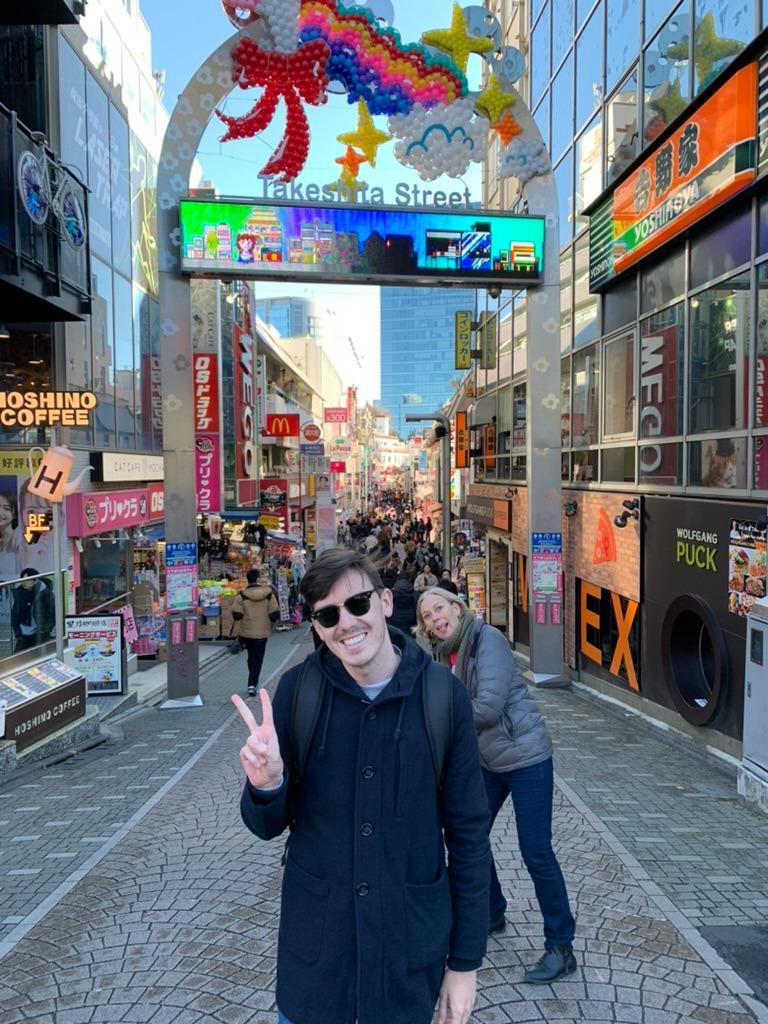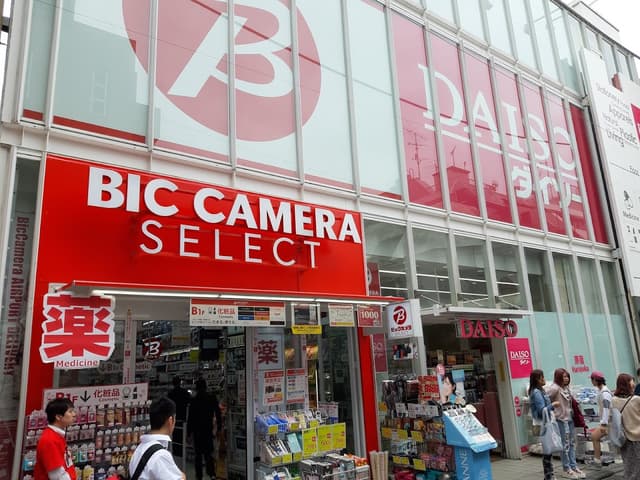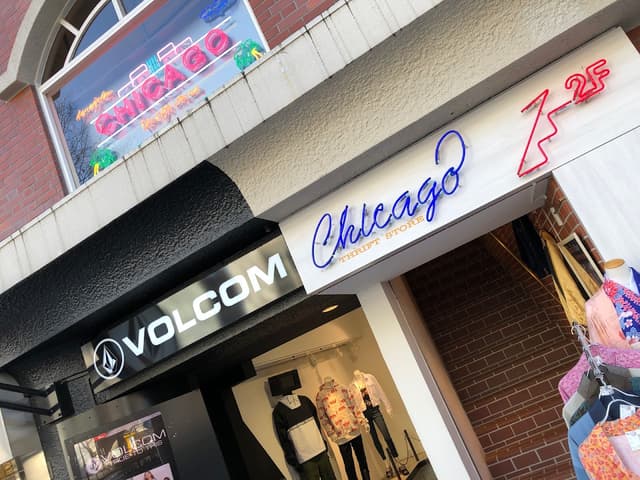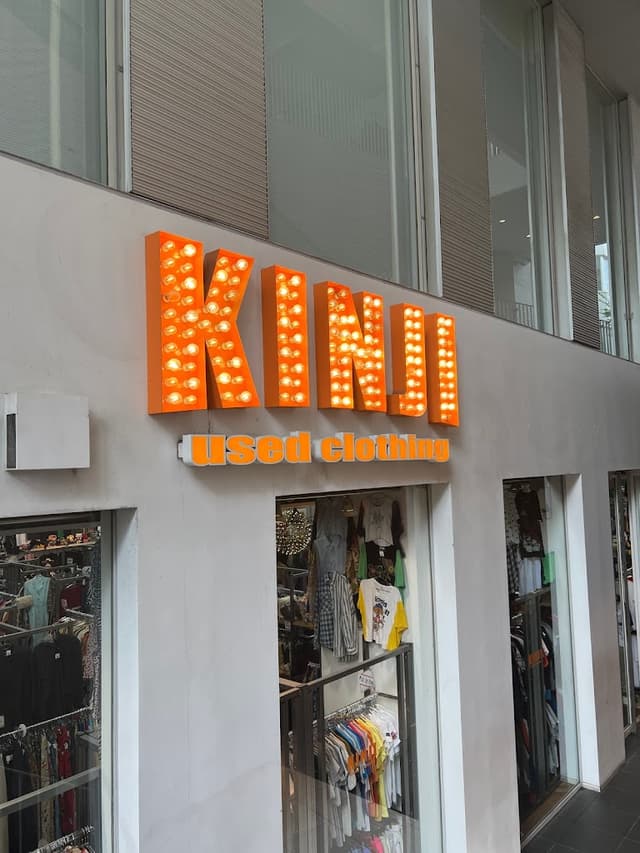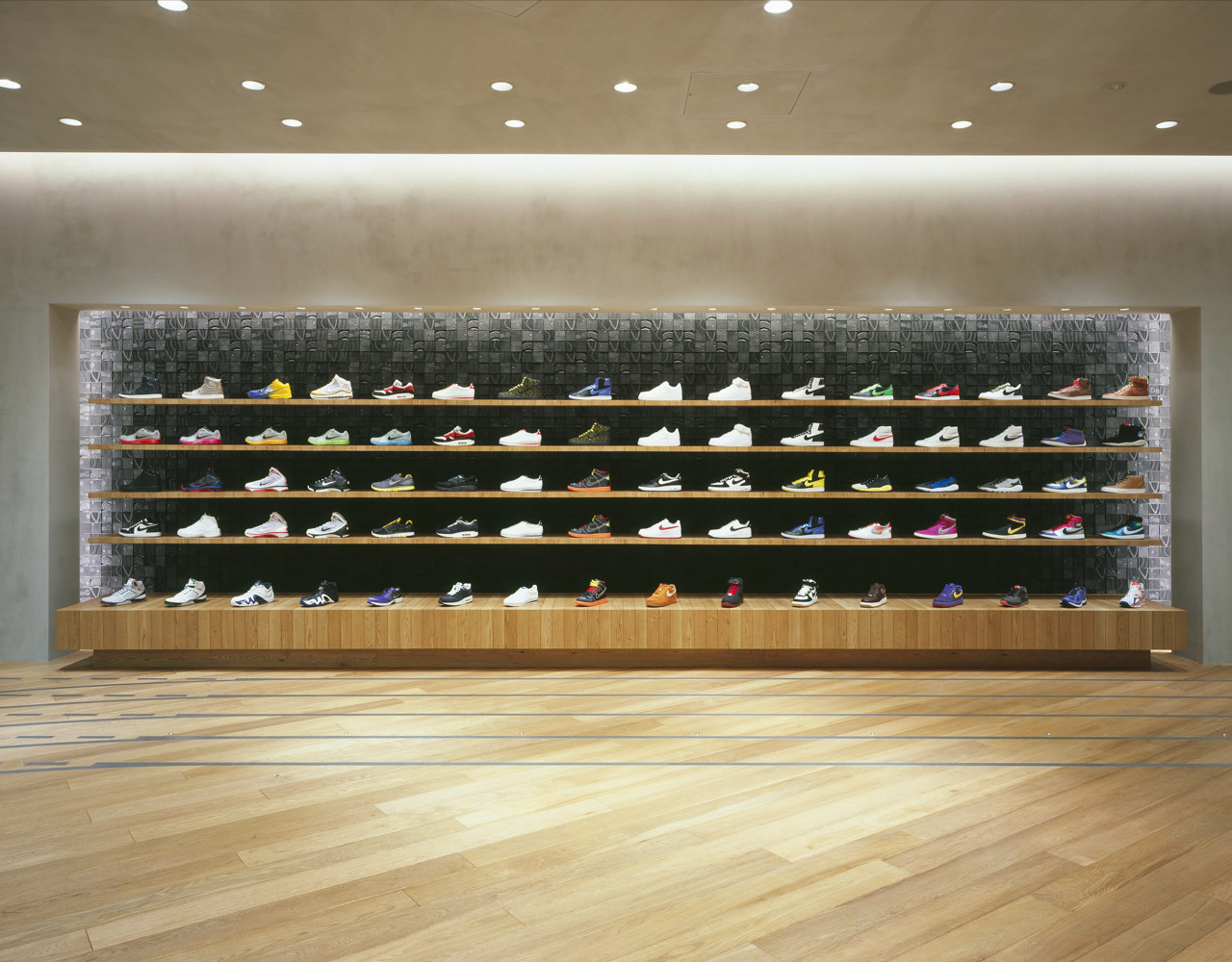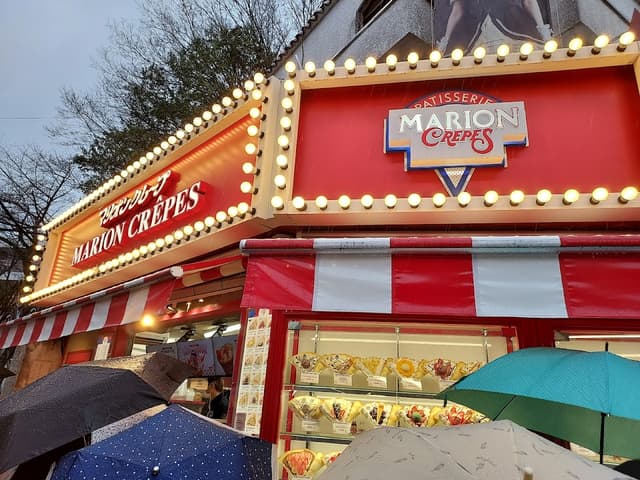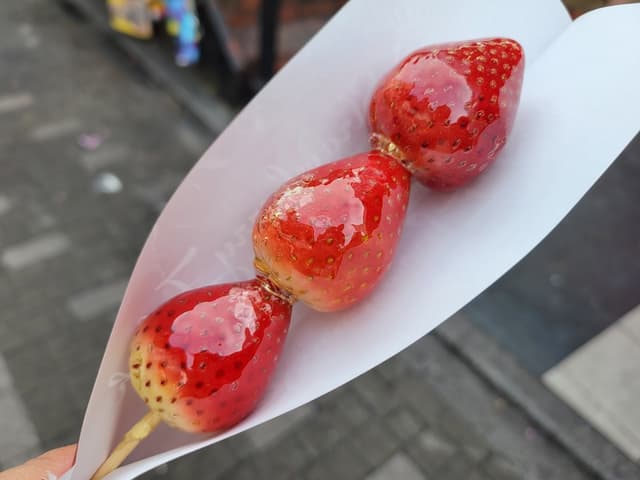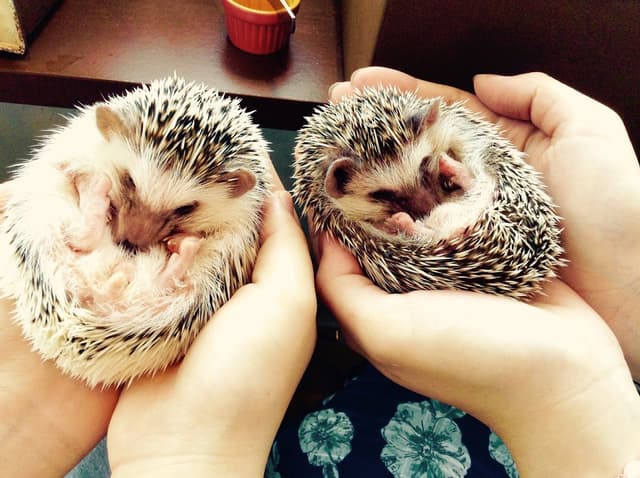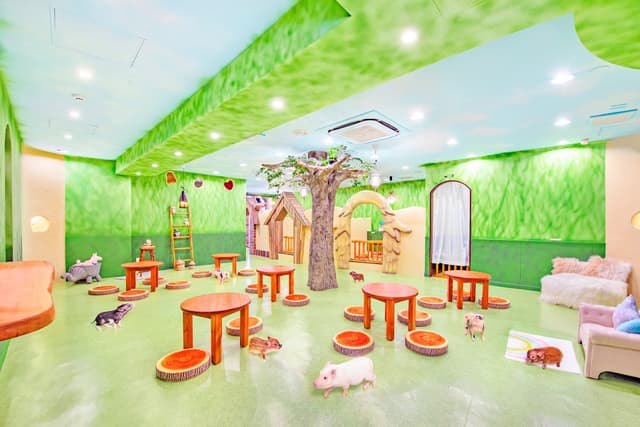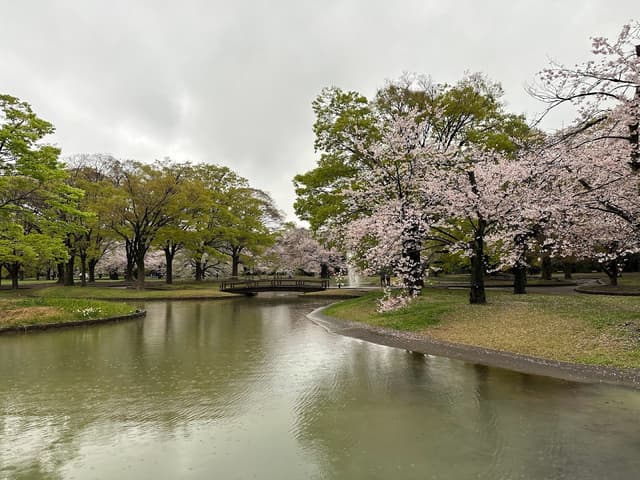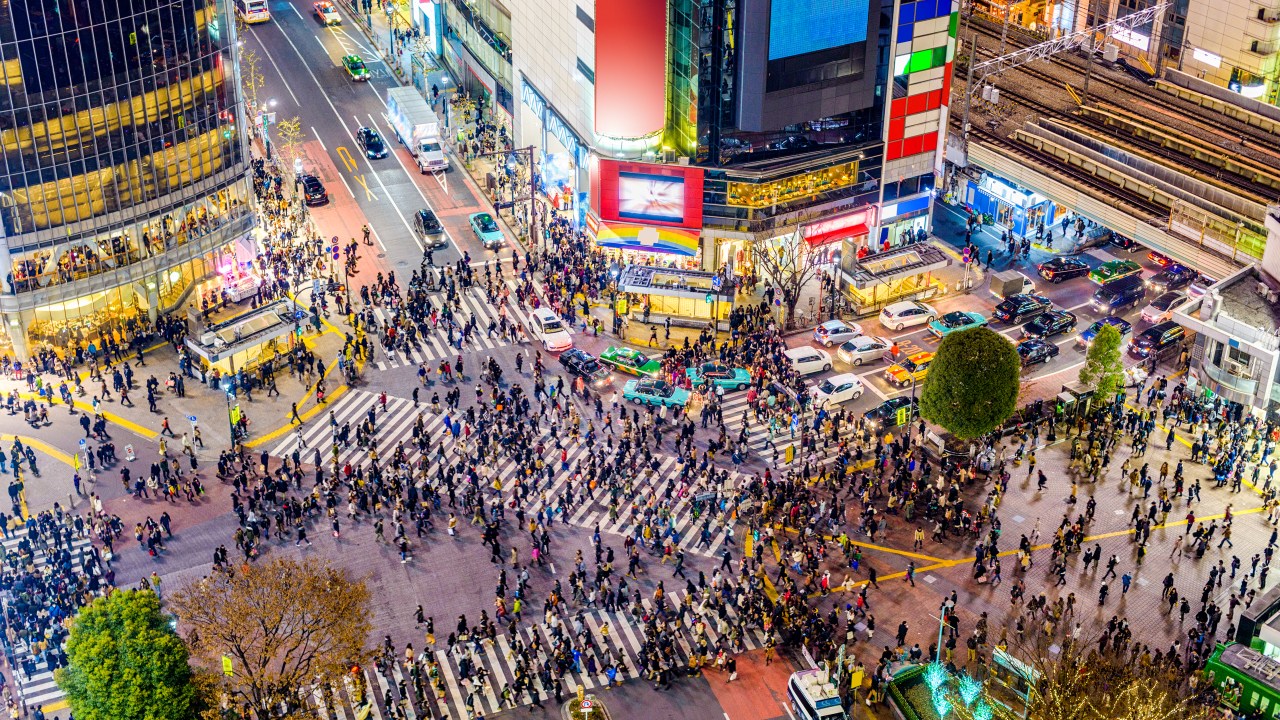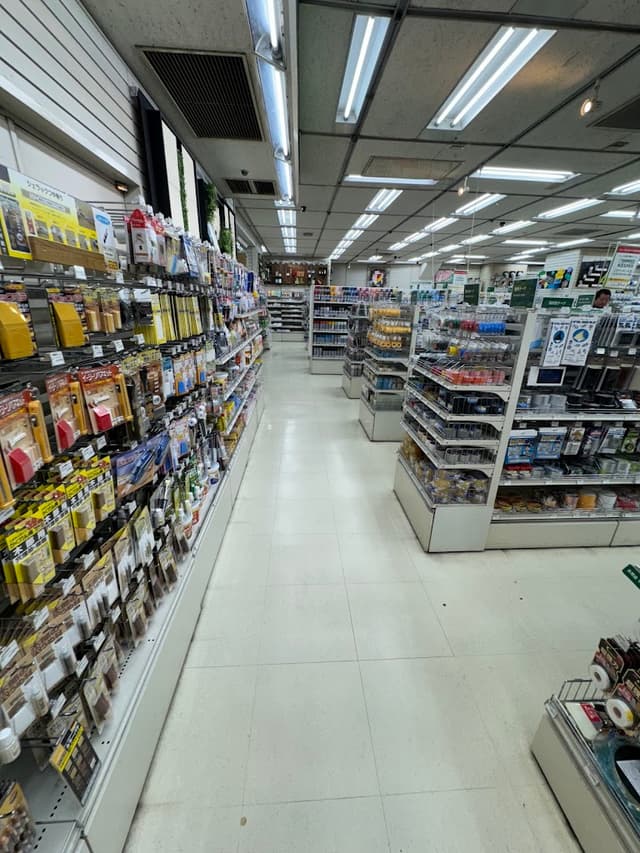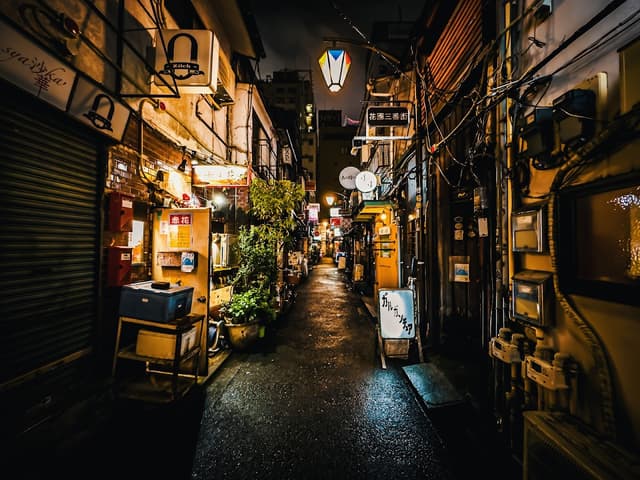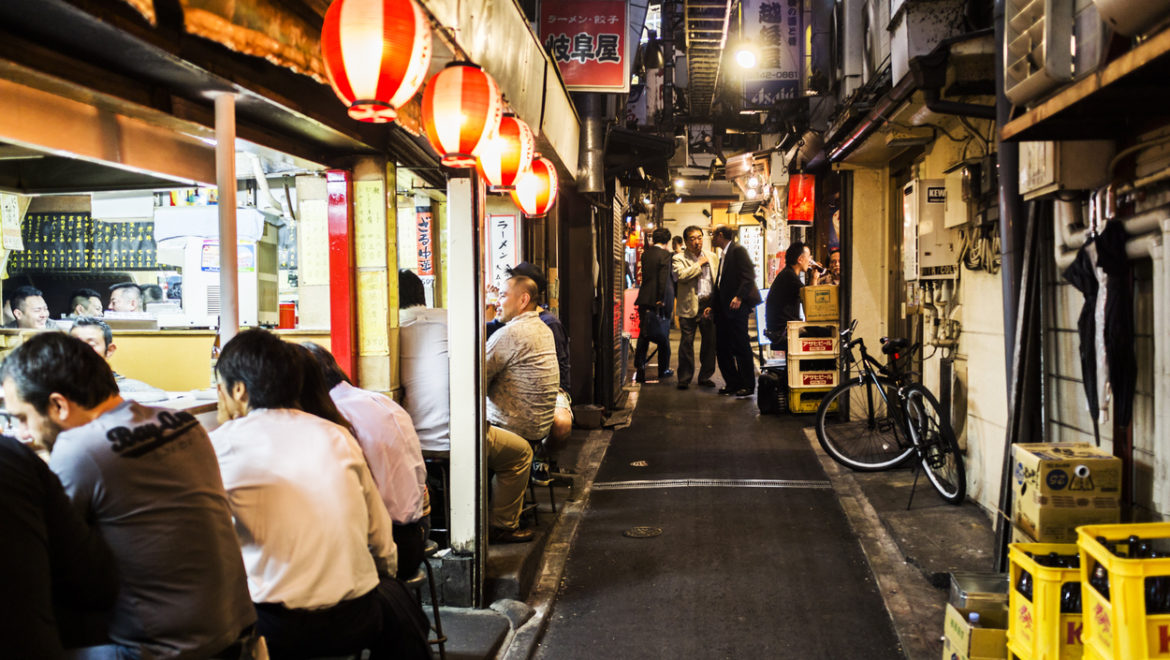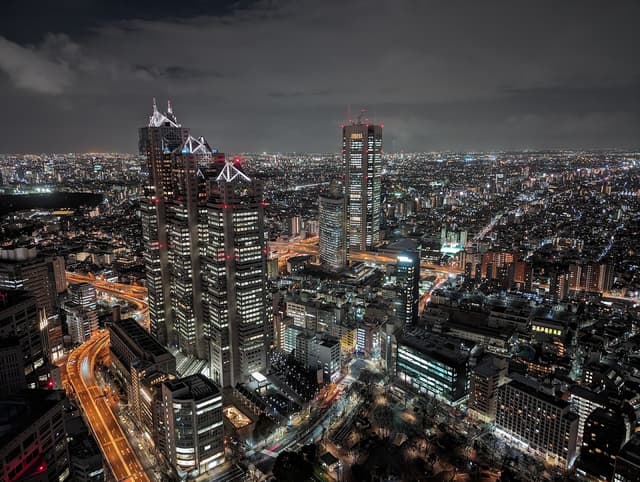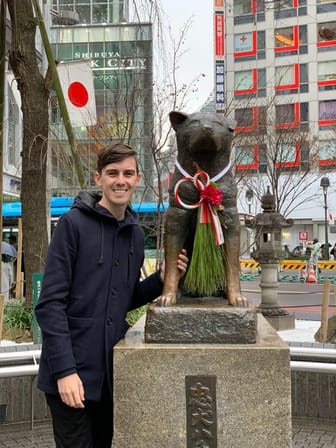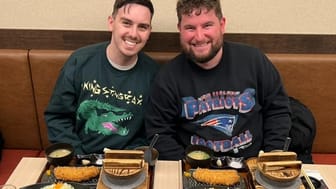See the below guide for further details on tips and tricks for navigating your time in Tokyo 🗼
Morning - Harajuku
Catch the JR Yamonote line towards Shibuya and get off at stop 15 Harajuku Station.
There are two entrances and exits. The station’s main entrance leads out towards Omotesando & Takeshita Shopping street, while a smaller entrance leads out to the Jingu Bridge (towards Meiji Jingu Shrine) and Yoyogi Park.
The Harajuku Eki Stamp is located Outside Omotesando Exit
About Harajuku
With the sheer number of clothing stores, sneaker specialists, souvenir shops, snack stands and cutesy cafés, Harajuku – especially the perennially crowded Takeshita Street – will surely kick your senses into overdrive.
Long before the neighbourhood became a major tourist hotspot, Harajuku was, and still is, an incubator for Japanese fashion, be it street style, vintage clothing or niche subcultures such as lolita and gyaru.
However, Harajuku has more to offer than shopping and quirky fashion, it is also the hub to try out the crazy and inventive desserts, snacks and street food that Tokyo is known for.
Recommended Approach
Stop 1: Meji Shrine
Note: While most shops in Japan don't open till around 10am shrines and temples are often open 24hrs a day or from dusk till dawn. This often makes them the first stop in a day of sightseeing. Make sure you grab a snack from a connivance store on the way for breakfast.
To get to Meji Shrine ead out the west exit of Harajuku station towards the Jingu Bridge & Meji Shrine. The main complex of shrine buildings is located a ten minute walk from the station.
Entry into the shrine grounds is marked by a massive torii gate, after which the sights and sounds of the busy city are replaced by a tranquil forest. The approximately 100,000 trees that make up Meiji Jingu's forest were planted during the shrine's construction and were donated from regions across the entire country.
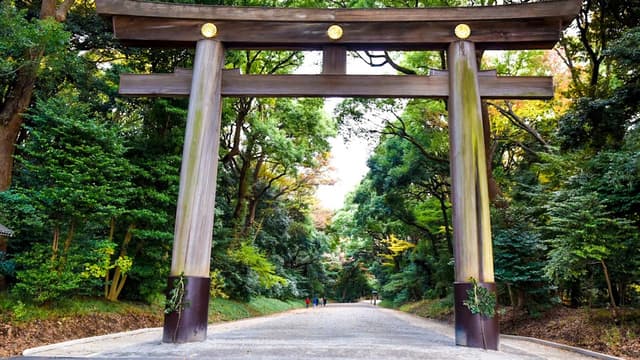
Meiji Jingu
@GCJaplanning
Hours: Sunrise to sunset
Closed: No closing days
Admission: Free
Meiji Shrine (明治神宮, Meiji Jingū) is a shrine dedicated to the deified spirits of Emperor Meiji and his consort, Empress Shoken. Located just beside the JR Yamanote Line's busy Harajuku Station, Meiji Shrine and the adjacent Yoyogi Park make up a large forested area within the densely built-up city and offer walking paths for a relaxing stroll away from the concrete.
The shrine was completed and dedicated to the Emperor Meiji and the Empress Shoken in 1920, eight years after the passing of the emperor and six years after the passing of the empress. The shrine was destroyed during the war but was rebuilt shortly thereafter.
Emperor Meiji was the first emperor of modern Japan. He was born in 1852 and ascended to the throne in 1867 at the peak of the Meiji Restoration when Japan's feudal era came to an end and the emperor was restored to power. During the Meiji Period, Japan modernized herself to join the world's major powers by the time Emperor Meiji passed away in 1912.

Details
Stop 2: Shopping in Takeshita Street & Surrounds
After visiting the Meji Shrine, head back to Harajuku station and walk around the station towards the eastern side of the tracks. Put in Takeshita street into Google Maps and it will take you there. Make sure you get a snap under the famous Takeshita Street sign at the entrance to the street.
Takeshita Street
@GCJaplanning
The focal point of Harajuku's teenage culture is Takeshita Dori (Takeshita Street) and its side streets, which are lined by many trendy shops, fashion boutiques, used clothes stores, crepe stands and fast food outlets geared towards the fashion and trend-conscious teens.

Details
Just south of Takeshita Dori and over twice its length is Omotesando, a broad, tree-lined avenue sometimes referred to as Tokyo's Champs-Elysees. Here you can find famous brand name shops, cafes and restaurants for a more adult clientele.
Top Picks for Shopping & Eats in Takeshita Street and surrounds
Shopping
DAISO Harajuku Store
@GCJaplanning
Japanese variety-store chain with housewares, toys, stationery, decorations, bento supplies & gifts.

Details
Flamingo
@GCJaplanning
This big vintage chain is one of the most reliable and affordable stores around, attracting fashion geeks looking for on-trend pieces. You can find all sorts of used American menswear and womenswear, shoes, accessories and knickknacks from the 1950's onwards

Details

Details
Kinji Used Clothing Harajuku Branch
@GCJaplanning
Second hand vintage used clothes

Details
Nike Harajuku
@GCJaplanning
The design concept for Nike’s first flagship store in Tokyo, which also happens to be the largest in the nation at 946 square meters, is a playing field. It is an experience-based store with facilities such as the Runner’s Studio for selecting shoes that match the individual’s feet and running style and the NIKEiD STUDIO. The interior also expresses the joy of sports by integrating characteristically NIKE items such as the shoes for the chandelier and the waffle molds of the outsoles as a decorative element for a wall.

Details
Food & Eats
Marion Crêpes Takeshitadori
@GCJaplanning
Harajuku crepes became popular as they aligned with the area's vibrant youth culture, offering a trendy and convenient street food since the first shop opened in 1977. The crepes, with their numerous sweet and savory fillings, are enjoyed on the go, contributing to the lively and fashionable atmosphere of Harajuku

Details
Kura Sushi Global Flagship Store Harajuku
@GCJaplanning
This popular conveyor belt sushi restaurant is ideal for a cheap and cheerful meal, but more often than not, the queue for a seat inside borders on the ridiculous.
So do this instead: skip the line and order from the takeaway menu, which includes fun sushi crêpes.

Details
Strawberry Fetish
@GCJaplanning
Strawberry Fetish specialises in tanghulu, a simple candy made by covering fresh fruit in a thin, crunchy layer of melted rock sugar. As these treats feature plenty of fresh fruit, they might make you feel less guilty about consuming all that sugary sweetness compared to some of the other desserts and snacks found along Takeshita-dori.
There are five varieties of tanghulu here, including strawberry (¥600), strawberry and green grapes (¥700), strawberry and purple grapes (¥700), strawberry and marshmallow (¥650), and grape (¥450). For an additional ¥70, you’ll get a side of condensed milk for dipping.

Details
Yurinan Harajuku
@GCJaplanning
If you’re looking for a quintessential Japanese dessert, you can’t go wrong with an ichigo daifuku. With a prime location right on Harajuku’s bustling Takeshita-dori, this confectionery turns out fruit-filled mochi known as daifuku. Its speciality, however, is strawberries, and the shop uses fresh, seasonal strawberries and adjusts the flavour of the sweet bean paste coating so as not to overpower the delicate sweetness of the strawberries. The mochi layer, on the other hand, comes in the classic white as well as a special black colour made with the addition of bamboo charcoal.

Details
Harajuku Gyozaro
@GCJaplanning
Gyozaro in Harajuku is a no-frills local gem serving tasty, cheap gyoza dumplings. The only downside is the constant queue at peak hours, but the stupendously low prices make it worth your time.

Details
Oreryu Shio Ramen Shibuya Center Gaiten
@GCJaplanning
If you're a ramen lover, you have to check out this restaurant! From the moment I stepped in, I was greeted by friendly staff and the typical cozy atmosphere. You order the food at the kiosk outside and pay right there. The menu in the kiosk was packed with a variety of ramen, fried rice and gyoza dishes. The broth was not rich enough for my liking but it tasted good, the noodles cooked to perfection, and the toppings were generous and fresh. Highly recommend trying the special pork ramen, it was a true standout. The service was outstanding with the staff checking our preferences and adjusting the ingredients to our liking and the prices were reasonable. Overall, a fantastic experience, will definitely revisit if we're in the area.

Details
Other Attractions
Hedgehog Cafe & Pet Store HARRY Harajuku
@GCJaplanning
Ensure you book in advance: https://squareup.com/appointments/book/3kuc83ozz99u5q/2HH2B2V7YZXBD/services
Approx 2800 Yen for 1hr

Details
mipig cafe - Harajuku
@GCJaplanning
Ensure you book in advance: https://booking.ebica.jp/webrsv/vacant/e020035901/31382?isfixshop=true&language=en
Entrance fee 1,100 yen + 1,650yen per 30mins/person

Details
Tokyu Plaza Omotesando Harajuku
@GCJaplanning
Amazing kaleidoscopic escalator + a rooftop Starbucks with amazing views on the 6th floor

Details
Yoyogi Park
@GCJaplanning
Yoyogi Koen (Yoyogi Park) is one of Tokyo's largest and most pleasant city parks, featuring wide lawns, ponds and forested areas. It is a great place for jogging, picnicking and other outdoor activities.
Although Yoyogi Park has relatively few cherry trees compared to other sites in Tokyo, it makes for a nice hanami spot in spring (late March to early April). Furthermore, it is known for its ginkgo tree forest, which turns intensely golden in autumn (late November to early December).

Details
Some Other Things to Consider
Avoid Scams: Be wary of any unsolicited approaches by street vendors or promotions. Stick to well-known shops and avoid giving personal information to strangers.
Respect Local Culture: Remember to respect the local customs and culture. If you're taking photos of or with locals, always ask for permission first.
Crowds: Takeshita Street can get incredibly crowded, especially on weekends and holidays. Keep your belongings secure and be mindful of personal space. Pickpocketing can happen in any crowded area, so consider a money belt or a cross-body bag that you can keep in front of you.
Afternoon - Shibuya
Either a 15 - 20 min walk from Harajuku station or the next stop on the Yamanote line (2 min) is the popular shopping and entertainment area found around Shibuya Station. In this regard, Shibuya is one of Tokyo's most colorful and busy districts.
Stop 1: Hatchicko Statue
This small bronze statue is in front of Shibuya Station (outside the eponymous Hachikō exit).
Hachikō Memorial Statue
@GCJaplanning
A statue of a loyal dog named Hachiko. According to a famous story, the dog waited for his master every day in front of Shibuya Station and continued to do so for years even after his master had passed away. It is one of Tokyo's most popular meeting points.

Details
Stop 2: Shibuya Crossing
Shibuya Scramble Crossing
@GCJaplanning
Shibuya Scramble Crossing, commonly known as Shibuya Crossing, is a popular pedestrian scramble crossing in Shibuya, Tokyo, Japan. It is located in front of the Shibuya Station Hachikō exit and stops vehicles in all directions to allow pedestrians to inundate the entire intersection.

Details
Stop 3: Shibuya Sky
Shibuya Sky
@GCJaplanning
Ensure you book: You can also purchase tickets in advance through the Shibuya Scramble Square website and get up to ¥200 discount – but tickets booked online are designated to a specific time slot on a specific date.
Shibuya Sky is approximately 230 metres above ground and is the highest point in the district of Shibuya. The ‘Sky Edge’, a corner where you can look down at the cityscape below without any obstruction, is a particularly good photo spot that provides a panoramic view of the city.
In addition to the breathtaking views, the rooftop also features hammocks for cloud watching and an observation compass to help you identify major landmarks in the distance such as Tokyo Tower, Tokyo Stadium and even Mt Fuji (on a clear day). At night, you'll be able to see a light show called the 'Crossing Light' as 18 beams illuminate the city sky.

Details
Stop 4: Have lunch at Shibuya ‘Yokocho’
Shibuya Yokocho
@GCJaplanning
situated on the south first floor of the brand new Rayard Miyashita Park building is Shibuya Yokocho (渋谷横丁), a cluster of izakayas sitting right next to each other along a 100-meter indoor alley, providing in total approximately 2500 food items, making it a wonderful daily food festival!

Details
Stop 5: Shop till your hear drops
See below some of my top picks for shops
LOFT101渋谷
@GCJaplanning
Teachers - This is the stationary store for you!!!
Shibuya Loft is a lifestyle-oriented department store that spans seven floors (from the basement to the sixth floor). With around 80,000 unique items, shoppers can find just about anything here, from stationery, watches, and accessories, to cosmetics, healthcare items, kitchenware, interior decor, and toys. Located in central Shibuya, Shibuya Loft is open until 9 PM daily. If you're searching for a unique souvenir or gift, look no further. There are plenty of items with Japanese flair, like notebooks, sumo wrestler postcards, tenugui towels, and daruma dolls. The cosmetics and beauty floor has a selection of affordable and higher-end products. And the kitchenware floor has a range of chopsticks and Japanese dishes that would make perfect souvenirs.

Details
Hands
@GCJaplanning
7 minutes on foot from Hachiko Exit of Shibuya Station. This Shibuya branch is the flagship store of Hands (formerly known as Tokyu Hands). Spanning eight floors, it offers everything from do-it-yourself to interior, hobby, crafts, outdoors and stationery.

Details
Evening - Shinjuku
Double back on the Clockwise Yamanote line from Shibuya to Shinjuku (8 min - 3 Stops).
Shinjuku Station is the world's busiest railway station, handling more than two million passengers every day. It is served by about a dozen railway and subway lines, including the JR Yamanote Line.
West of the station is Shinjuku's skyscraper district, home to many of Tokyo's tallest buildings, including several premier hotels and the twin towers of the Metropolitan Government Office, whose observation decks are open to the public for free.
Northeast of the station lies Kabukicho, Japan's largest and wildest red light district, while department stores, subterranean malls and electronic shops surround Shinjuku Station on all four sides, including the redeveloped Southern Terrace.
Stop 1: Dinner and Drinks in Piss Alley
To reach these two locations they are a short walk from the East Exit of Shinjuku Station
Shinjuku Golden Gai
@GCJaplanning
Golden Gai is a small, atmospheric nightlife district in Kabukicho packed with over 200 small bars and eateries. Most places are very small, seating only a few customers, and typically cater to a few regular customers. A few of the bars openly welcome foreign guests with signs and menus set outside listing prices in English.

Details
Omoide Yokocho
@GCJaplanning
Omoide Yokocho in Shinjuku, Tokyo is a warren of small alleys crammed with izakaya-type restaurants appealing to office works and foreign visitors alike.
Note: most of these places only accept cash and you often have to buy a drink and food to sit. There is not a lot of english spoken so come armed with google translate or some basic Japanese.
Starting out as an illegal drinking quarter in the late 1940s, this narrow side street quickly became a prime spot for cheap drinks, yakitori and cabaret-style hostess bars. Due to the lack of restroom facilities, patrons would wander off and relieve themselves on the nearby train tracks, and it didn’t take long for Piss Alley to earn its name.
In those days, the area provided a social space for local residents who otherwise wouldn’t have been able to afford such luxuries as meat and alcohol in the impoverished post-war economy.
Try the horse penis and pig testicles at Asadachi

Details
Tokyo Metropolitan Government Building South Observatory
@GCJaplanning
The Tokyo Metropolitan Government Office, also known as Tocho, offers one of the best free ways to view Tokyo's vast and sprawling skyline. The South Observatory provides a stunning panoramic view that encompasses several iconic sights of the city

Details
* * *
